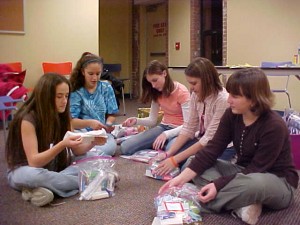Young People are Volunteering
Thursday, July 30th, 2009 A report by the Corporation for National and Community Service’s Volunteering in America shows that about a million more people volunteered in 2008 than in the previous year.
A report by the Corporation for National and Community Service’s Volunteering in America shows that about a million more people volunteered in 2008 than in the previous year.
What accounts for the surge in volunteering? Teens and young adults! The study shows that young people are increasingly interested in serving their communities and making a difference. Of the one million new volunteers, 441,000—almost half—were between the ages of 16 and 24. This age group makes up 21.9 percent of all volunteers, with a total of 8.24 million young people volunteering in 2008.
Teens and young adults are increasingly interested in assisting others. Among first-year college students, nearly 70 percent (the highest rate since 1970) believe it is essential or very important to help other people in need. President Barack Obama’s call to volunteerism, as well as an increase in service requirements in US middle and high schools, may have contributed to the uptick.
If your nonprofit organization (NPO) needs additional volunteers, consider reaching out to the teen and young adult group. They are likely more aware of volunteer opportunities and needs as growing numbers of their peers communicate their involvement.
And if you already enjoy the help of young people in your NPO, ask them to reach out to their friends. The Volunteering in America study shows that people who do not currently volunteer are more likely to do so if asked by a trusted friend.
You will enjoy a much greater rate of success promoting your cause to this age group if you utilize the same social networking communities that they do—such as Facebook and Twitter. It’s easy to create a fan page on Facebook and set up a Twitter account. With a small time investment, you can communicate with thousands of potential volunteers at once, while they learn more about your cause and your need for volunteers.
The rate of volunteerism in America has not declined, despite the challenging economy. Now is a great time to recruit new volunteers—and teens and young adults are a great group to target!





